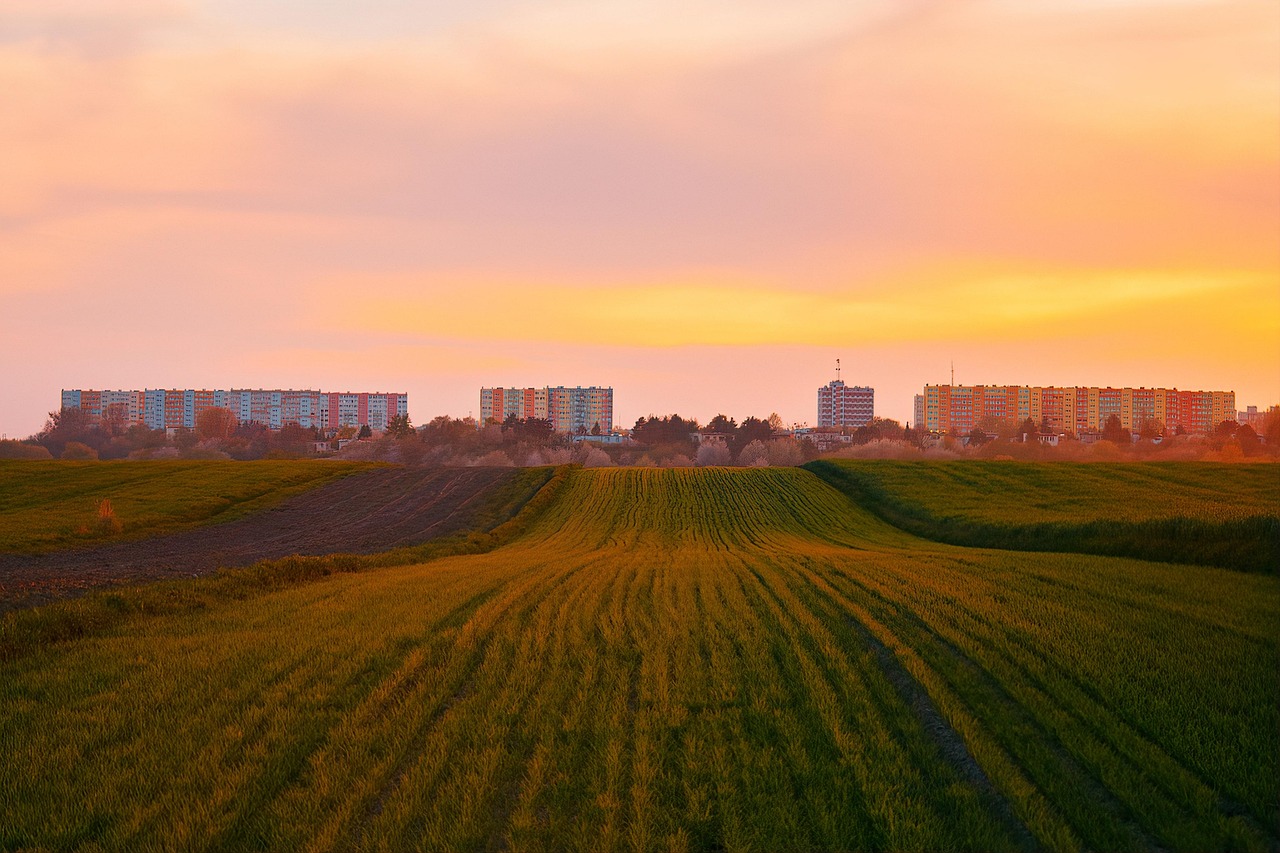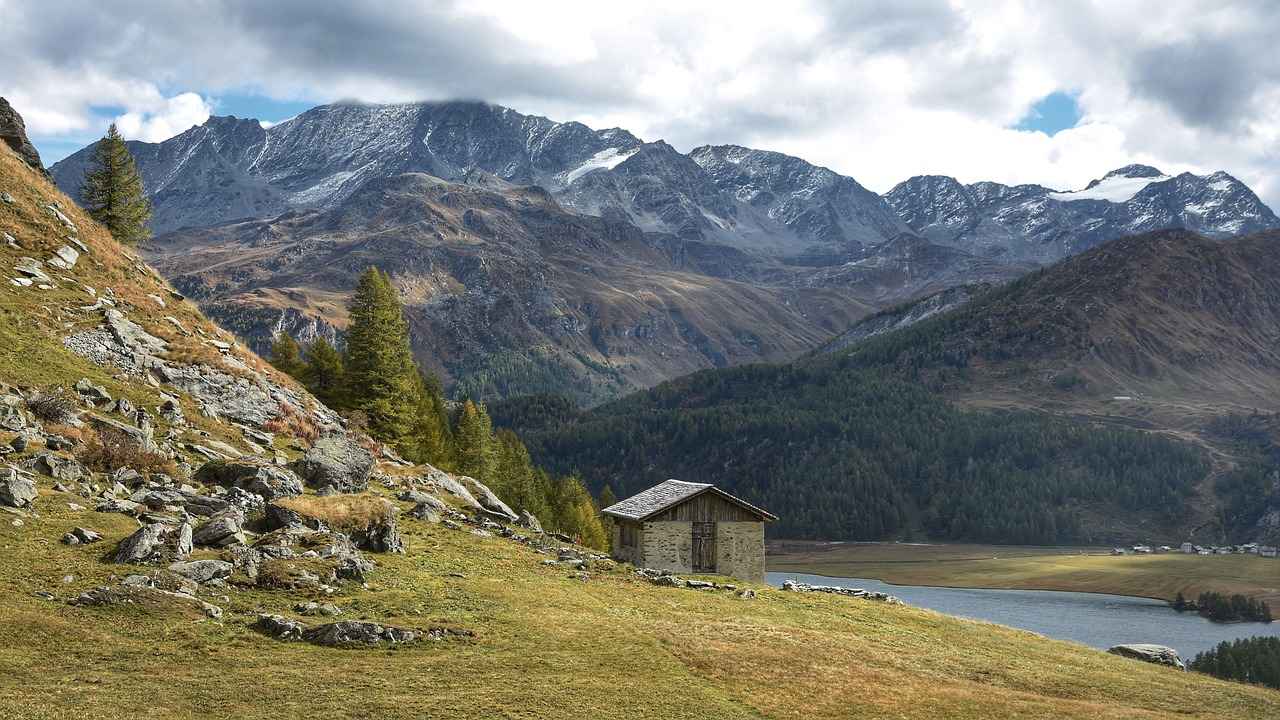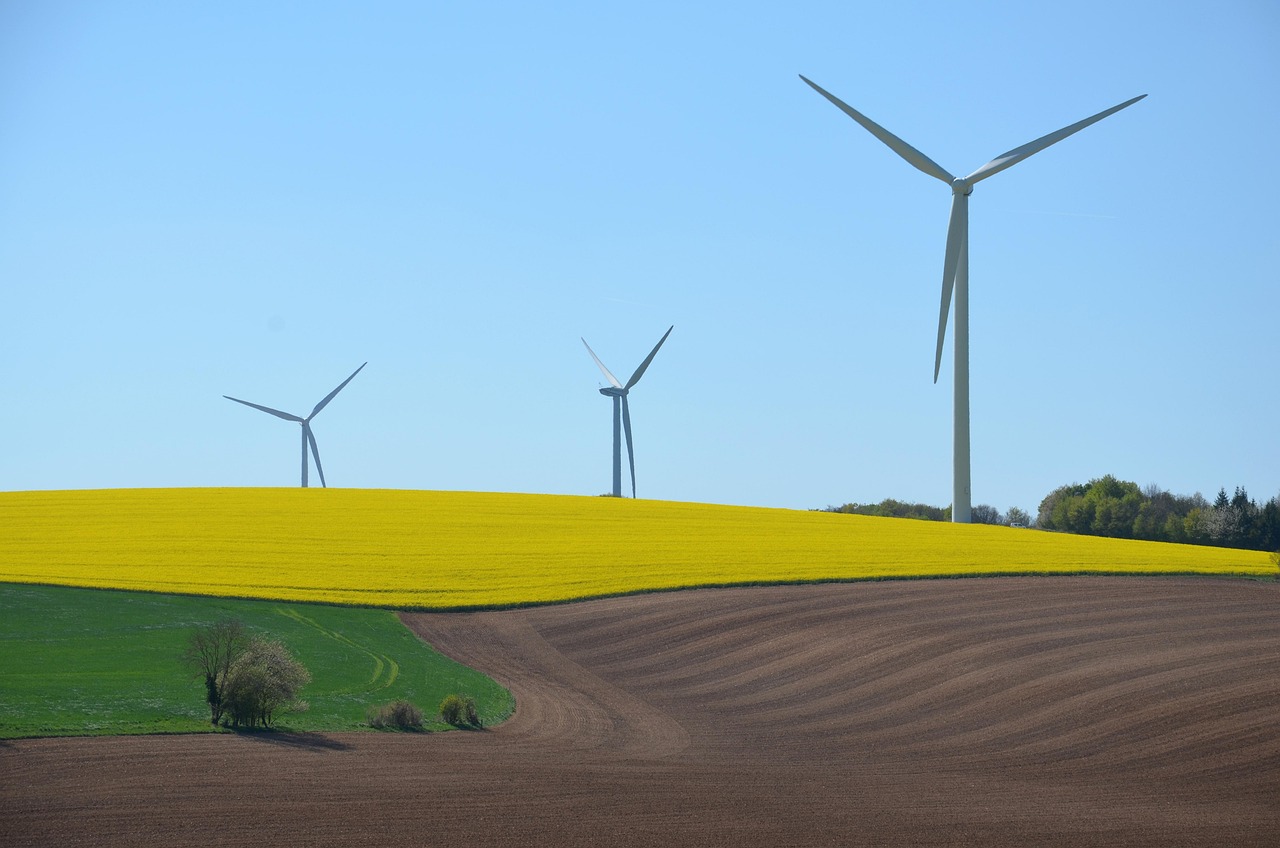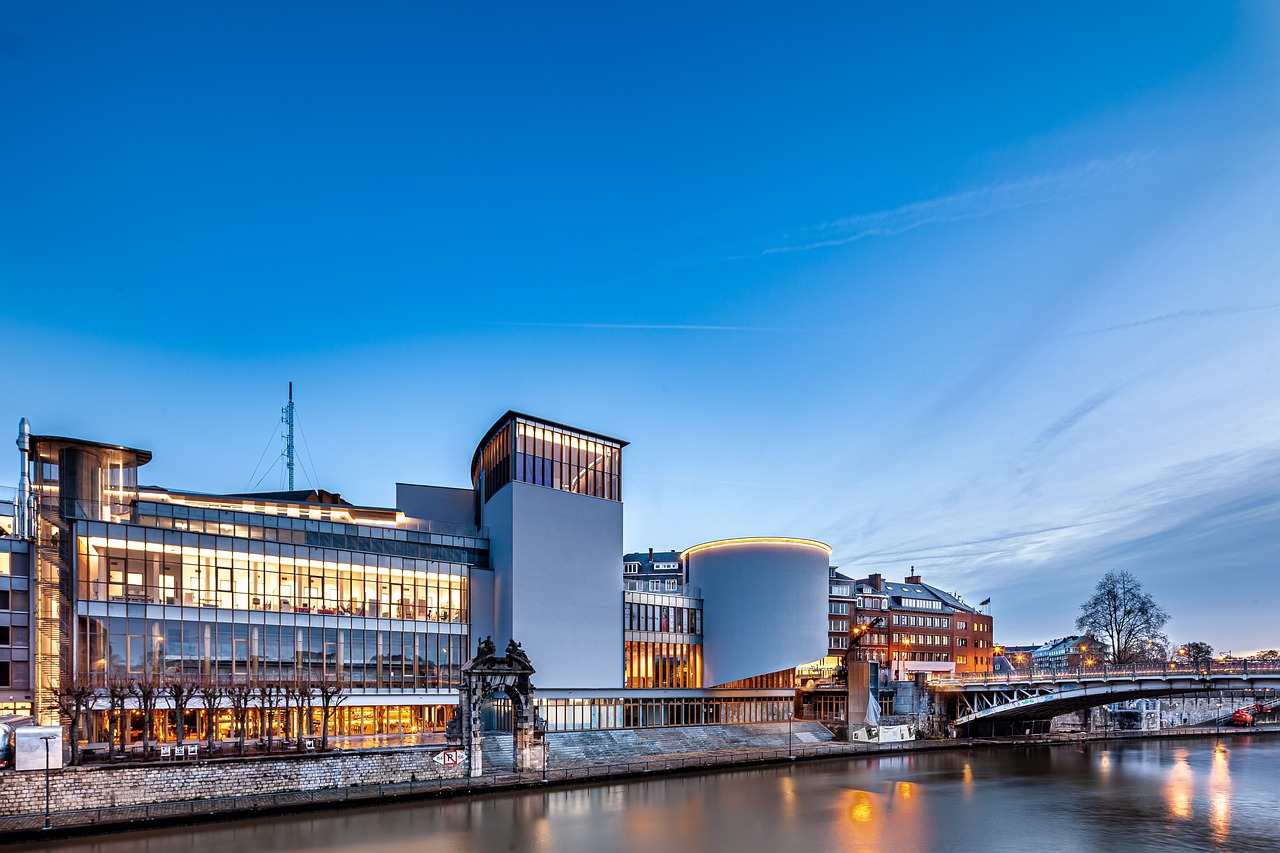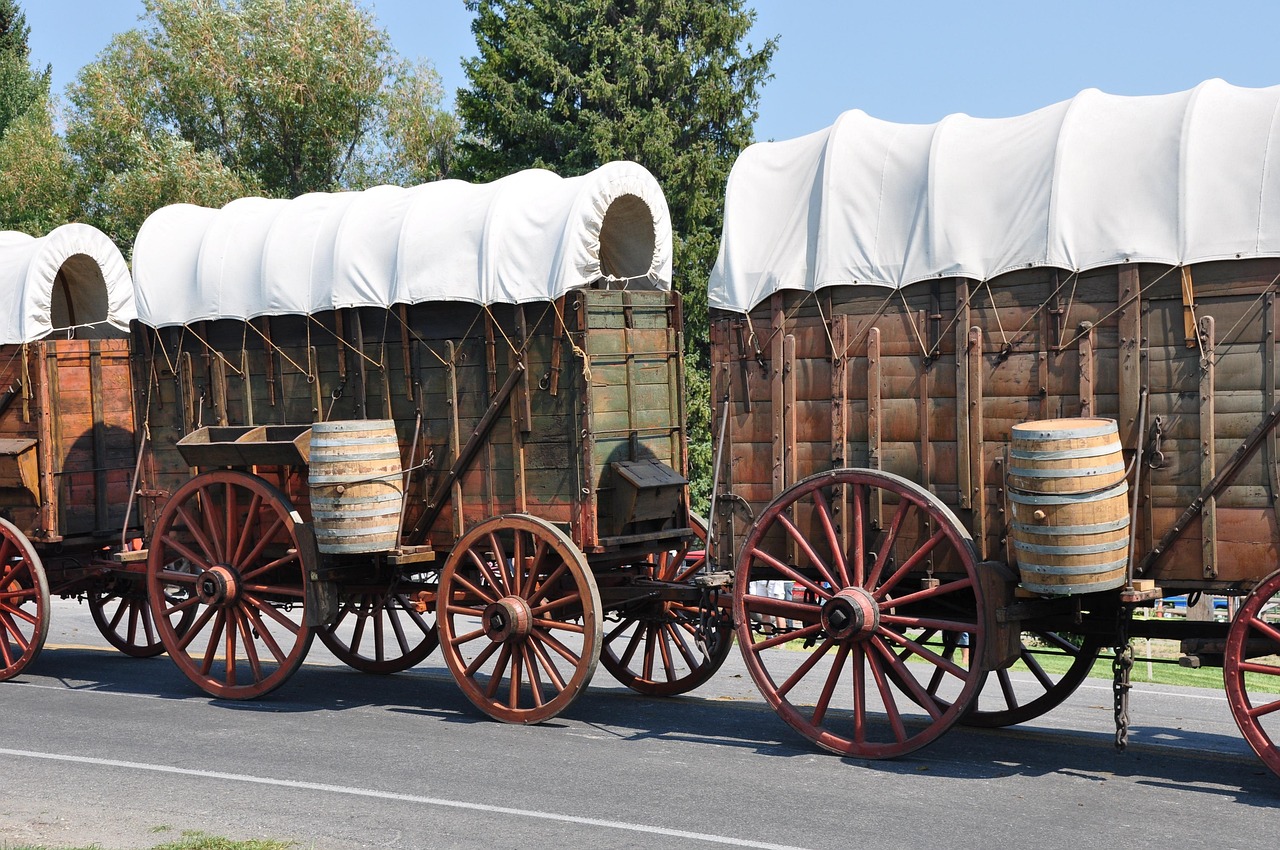This article delves into the significant contributions of West Bengal to India’s economic landscape, highlighting its diverse industries, agricultural practices, and rich cultural heritage that collectively drive growth and development.
1. Historical Context of West Bengal’s Economy
Understanding the historical background of West Bengal provides insight into its current economic status. The region has evolved from traditional industries to modern sectors, adapting through various economic phases.
2. Key Industries Driving Economic Growth
West Bengal is home to several key industries, including jute, textiles, and information technology, which play a crucial role in the state’s economic development.
- 2.1 Jute Industry: A Historical Backbone
- 2.1.1 Modernization of Jute Production
- 2.1.2 Challenges Facing the Jute Industry
- 2.2 The Rise of Information Technology
The jute industry has been a cornerstone of West Bengal’s economy, contributing significantly to employment and exports, with Kolkata serving as a major hub.
Recent advancements in technology have modernized jute production processes, enhancing efficiency and sustainability in this traditional industry.
Despite its historical significance, the jute industry faces challenges such as competition from synthetic fibers and fluctuating market prices.
The IT sector in West Bengal has witnessed exponential growth, attracting investments and creating job opportunities, particularly in Kolkata and its surrounding regions.
3. Agricultural Contributions to the Economy
Agriculture remains a vital sector in West Bengal, providing livelihoods for millions and contributing to the state’s GDP through diverse crops and innovative practices.
- 3.1 Major Agricultural Products
- 3.2 Innovations in Agricultural Practices
West Bengal is known for its rice, tea, and fish production, which are essential for both local consumption and export markets.
Innovative farming techniques and government initiatives have improved agricultural productivity, ensuring food security and enhancing farmers’ incomes.
4. The Role of Small and Medium Enterprises (SMEs)
SMEs are crucial to West Bengal’s economy, fostering entrepreneurship and generating employment across various sectors, thus contributing to overall economic resilience.
5. Infrastructure Development and Economic Growth
Infrastructure improvements, including transportation and logistics, have significantly boosted West Bengal’s economic landscape, facilitating trade and commerce.
- 5.1 Transportation Networks
- 5.2 Investment in Urban Infrastructure
The development of road, rail, and air transport networks has enhanced connectivity, making it easier for businesses to operate and expand.
Investment in urban infrastructure projects has transformed cities in West Bengal, attracting businesses and improving the quality of life for residents.
6. Cultural Heritage and Economic Impact
West Bengal’s rich cultural heritage, including art, literature, and festivals, attracts tourism, which significantly contributes to the state’s economy.
- 6.1 Tourism as an Economic Driver
- 6.2 Promoting Local Artisans and Crafts
Tourism in West Bengal, driven by historical sites and natural beauty, plays a vital role in job creation and revenue generation.
Supporting local artisans and crafts not only preserves cultural heritage but also boosts the economy through handicraft exports and local sales.
7. Government Policies Supporting Economic Growth
Government initiatives and policies aimed at promoting industrialization and entrepreneurship are essential for sustaining West Bengal’s economic growth trajectory.
8. Challenges and Opportunities Ahead
While West Bengal has made significant strides in economic growth, it faces challenges such as unemployment and infrastructure deficits, which present both challenges and opportunities for future development.
9. Conclusion: The Future of West Bengal’s Economy
In conclusion, West Bengal’s diverse economic sectors, historical significance, and cultural richness position it as a crucial player in India’s overall economic growth, with potential for further development and innovation.

1. Historical Context of West Bengal’s Economy
To fully appreciate the current economic landscape of West Bengal, it is essential to delve into its historical context. This state, located in eastern India, has a rich tapestry of history that has significantly shaped its economic status today. The evolution of its industries and agricultural practices can be traced back to colonial times, where the British established Kolkata as a major trading port. The city’s strategic location along the Hooghly River facilitated trade and commerce, which laid the groundwork for future economic development.
During the colonial era, West Bengal became a hub for various industries, including jute, textiles, and tea. The jute industry, in particular, emerged as a cornerstone of the economy, providing employment to thousands and contributing significantly to exports. This historical significance of jute has influenced the state’s economic policies and industrial focus even in contemporary times.
Post-independence, West Bengal faced numerous challenges, including political unrest and economic stagnation. However, the state has shown resilience, gradually revitalizing its industries and agriculture. The introduction of modern agricultural practices and government initiatives aimed at supporting farmers have transformed the agricultural landscape. Today, West Bengal is a leading producer of rice and fish, contributing substantially to the national food supply.
Furthermore, the state’s rich cultural heritage, which includes art and literature, has also played a pivotal role in shaping its economy. The promotion of tourism, driven by historical sites and cultural festivals, has added another layer to the economic fabric of West Bengal.
In conclusion, understanding the historical context of West Bengal’s economy provides valuable insights into its current status. The evolution of industries and agricultural practices, shaped by both colonial and post-colonial influences, continues to drive economic growth and development in the region.
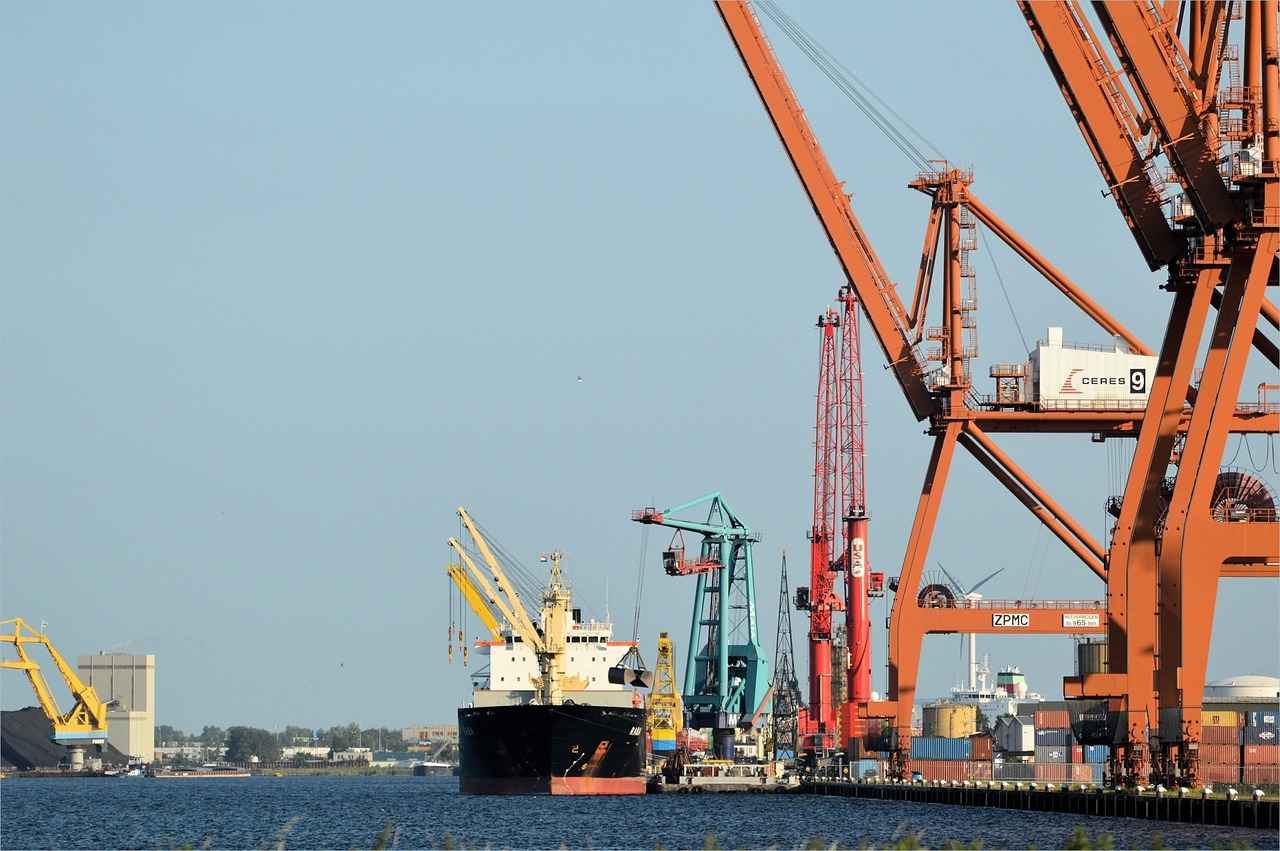
2. Key Industries Driving Economic Growth
West Bengal plays a pivotal role in India’s economic landscape, boasting a diverse range of industries that contribute significantly to its growth. Among these, the jute, textiles, and information technology sectors stand out as key players, each bringing unique strengths and challenges to the table.
The industrial framework of West Bengal is robust and multifaceted, with several key sectors driving economic development. The following sections delve into the primary industries that have established West Bengal as an economic powerhouse in India.
- Jute Industry: Historically, the jute industry has been a cornerstone of West Bengal’s economy, providing employment to millions and serving as a major export commodity. The region’s favorable climate and soil conditions make it ideal for jute cultivation.
- Textile Industry: The textile sector has evolved over the years, with a focus on both traditional handwoven fabrics and modern textile manufacturing. This industry not only supports local artisans but also caters to national and international markets.
- Information Technology: The IT sector in West Bengal has seen exponential growth, particularly in Kolkata, where numerous IT parks and tech hubs have emerged. This growth has led to increased job opportunities and attracted significant investments.
The jute industry remains integral to West Bengal’s identity. With Kolkata as its hub, it has been a major source of employment and export revenue. Recent advancements in technology have modernized production processes, enhancing both efficiency and sustainability.
West Bengal’s IT sector is thriving, with a surge in startups and established firms alike. The state government has implemented policies to foster innovation and attract talent, positioning West Bengal as a competitive player in the national IT landscape.
In summary, the diverse industries of West Bengal, particularly jute, textiles, and information technology, are crucial to the state’s economic growth. Their continued development not only supports local communities but also contributes to the broader economic framework of India.
2.1 Jute Industry: A Historical Backbone
The Jute Industry: A Historical Backbone
The jute industry has long been a fundamental pillar of West Bengal’s economy, playing a crucial role in both employment and exports. With Kolkata as its vibrant hub, the industry has shaped the region’s economic landscape for decades.
Historically, jute was often referred to as “golden fiber” due to its economic significance and the wealth it generated for the region. This natural fiber, primarily cultivated in the fertile plains of Bengal, has been a source of livelihood for millions of farmers and laborers. The industry not only provides direct employment but also supports a vast network of ancillary industries, including spinning, weaving, and manufacturing of jute products.
In recent years, the jute industry has undergone significant modernization. Advances in technology have improved production processes, making them more efficient and environmentally sustainable. This shift has not only enhanced the quality of jute products but also increased their competitiveness in the global market.
However, the jute industry faces several challenges. The rise of synthetic fibers poses a significant threat, as cheaper alternatives flood the market. Additionally, fluctuating prices and changing consumer preferences have created uncertainties that impact the livelihoods of those dependent on jute cultivation and production.
Despite these challenges, the government and various organizations are working towards revitalizing the jute sector. Initiatives aimed at promoting research and development, as well as expanding market access, are crucial for ensuring the industry’s sustainability. The focus is also on enhancing the export potential of jute products, which can significantly contribute to West Bengal’s economy.
In conclusion, the jute industry remains a vital component of West Bengal’s economic framework. Its historical significance, coupled with ongoing modernization efforts, highlights its potential to adapt and thrive in a changing global landscape.
2.1.1 Modernization of Jute Production
The modernization of jute production is a significant development in the traditional jute industry of West Bengal. With the integration of advanced technologies, the production processes have been transformed, leading to enhanced efficiency and sustainability.
- Automation: The introduction of automated machinery has streamlined the jute processing stages, reducing labor costs and increasing output. Automated spinning and weaving machines have improved the consistency and quality of jute products.
- Biotechnology: Innovative biotechnological methods are being employed to enhance the quality of jute fibers. These techniques involve genetic modifications that result in stronger and more resilient plants, ensuring higher yields and better fiber quality.
- Sustainable Practices: Modern jute production emphasizes sustainability. Techniques such as crop rotation and organic farming are being adopted to minimize environmental impact, promoting eco-friendly practices in the industry.
- Digitalization: The use of digital platforms for marketing and sales has expanded the reach of jute products. Online marketplaces and e-commerce have made it easier for producers to connect with global buyers, increasing market access.
Furthermore, the implementation of smart farming technologies has revolutionized how jute is cultivated. Sensors and data analytics are now used to monitor soil health, moisture levels, and crop growth, leading to informed decision-making and optimized production.
As a result of these advancements, the jute industry is not only becoming more competitive against synthetic alternatives but is also carving a niche in the growing market for sustainable and biodegradable products. The modernization of jute production processes is a vital step towards ensuring the industry’s longevity and relevance in the global market.
Overall, the modernization efforts in jute production showcase a successful blend of tradition and technology, paving the way for a brighter and more sustainable future for this historic industry.
2.1.2 Challenges Facing the Jute Industry
The jute industry, a pivotal part of West Bengal’s economy, is currently grappling with several challenges that threaten its sustainability and growth. While the historical significance of jute is well-documented, the industry now faces a myriad of issues that require immediate attention.
Competition from Synthetic Fibers
One of the most pressing challenges is the intense competition from synthetic fibers. Materials like polyester and nylon have surged in popularity due to their durability and versatility, leading to a decline in jute’s market share. As consumers increasingly opt for these alternatives, the demand for jute products has significantly decreased, putting pressure on manufacturers and farmers alike.
Fluctuating Market Prices
Another significant hurdle is the fluctuation in market prices for jute. Prices can vary dramatically based on factors such as weather conditions, global supply and demand, and economic policies. This volatility makes it difficult for producers to plan and invest in their operations, often resulting in financial instability.
Environmental Concerns
Additionally, the industry faces environmental challenges. While jute is often hailed as an eco-friendly alternative to synthetic materials, the cultivation process can still lead to soil degradation and water scarcity if not managed sustainably. This has raised concerns among environmentalists and consumers alike, pushing the industry to adopt more sustainable practices.
Technological Adaptation
Lastly, there is a pressing need for technological adaptation within the jute sector. Many producers still rely on outdated methods, which can result in lower efficiency and quality. Embracing modern technologies in processing and production could enhance competitiveness but requires investment and training.
In summary, while the jute industry remains a vital part of West Bengal’s economy, overcoming these challenges is essential for its revival and growth. Addressing competition, price volatility, environmental concerns, and technological gaps will be crucial in sustaining this historically significant industry.
2.2 The Rise of Information Technology
The Rise of Information Technology in West Bengal has become a pivotal aspect of the state’s economic landscape, particularly in the bustling city of Kolkata and its surrounding areas. The sector has not only attracted significant investments but has also generated a multitude of job opportunities, making it a vital contributor to the region’s growth.
Over the past decade, West Bengal has positioned itself as a prominent IT hub in India. The state government has implemented various policies aimed at promoting technological innovation and entrepreneurship. These initiatives have fostered a conducive environment for both domestic and international IT companies to establish their operations.
- Investment Surge: Major global tech firms have set up offices in Kolkata, bringing in substantial investments. This influx of capital has facilitated the establishment of several IT parks, creating a robust infrastructure for tech development.
- Job Creation: The growth of the IT sector has led to the creation of thousands of jobs, catering to a diverse talent pool. Many young professionals are finding lucrative employment opportunities in software development, data analysis, and IT services.
- Skill Development: Educational institutions in West Bengal have adapted their curricula to meet the demands of the IT industry, offering specialized courses that equip students with necessary skills. This has resulted in a workforce that is well-prepared for the challenges of the tech world.
Furthermore, the rise of startups in West Bengal’s IT ecosystem has been remarkable. Many tech entrepreneurs are leveraging local resources and talent to develop innovative solutions, contributing to the state’s dynamic economic environment.
However, challenges remain. The state must address issues such as infrastructure deficits and the need for continuous skill enhancement to maintain its competitive edge in the IT sector. By focusing on these areas, West Bengal can further solidify its reputation as a leading destination for technology and innovation in India.
In conclusion, the exponential growth of the IT sector in West Bengal is a testament to the state’s potential and resilience. With ongoing support from the government and the private sector, the future looks promising for this vibrant industry.
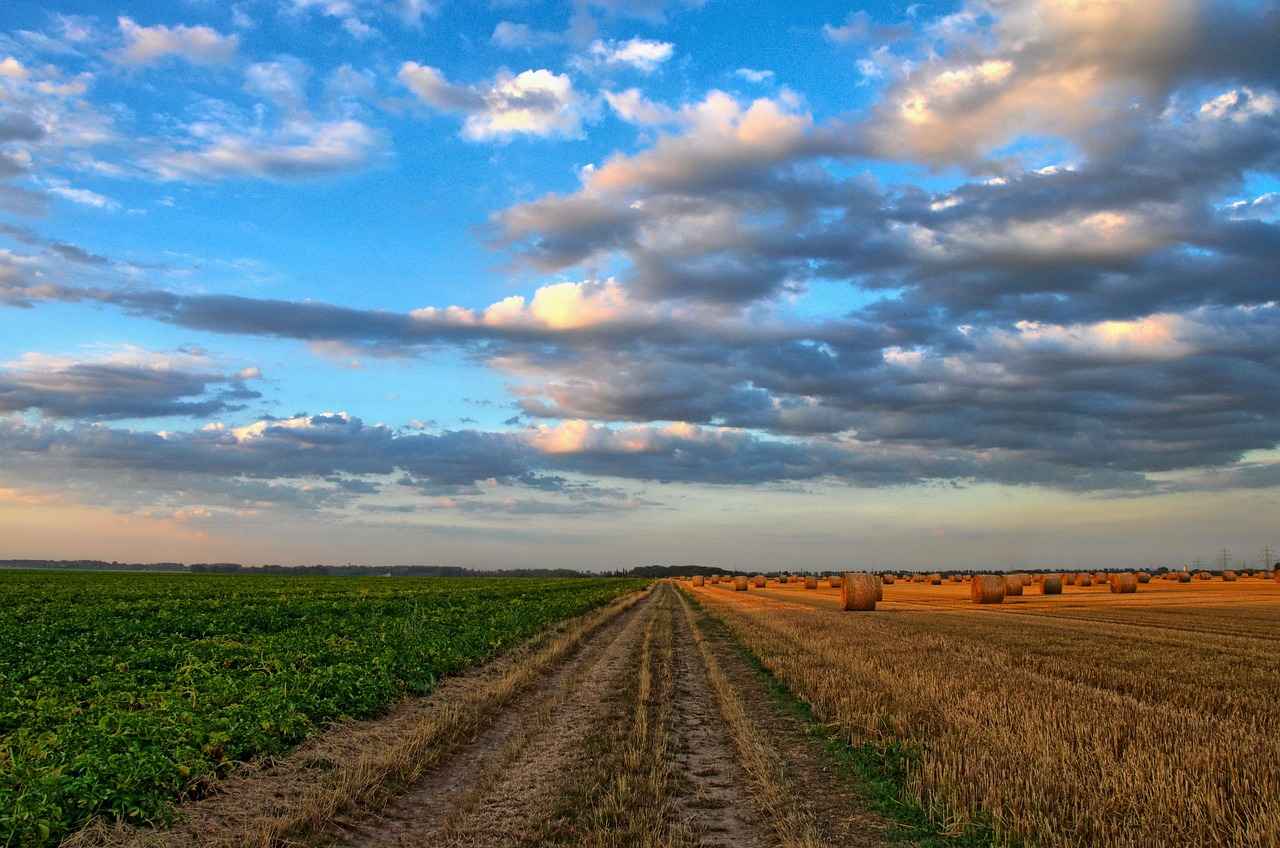
3. Agricultural Contributions to the Economy
Agriculture plays a pivotal role in the economy of West Bengal, serving as a backbone for the livelihoods of millions and significantly contributing to the state’s Gross Domestic Product (GDP). This sector is characterized by a rich diversity of crops and innovative agricultural practices that reflect the region’s adaptability and resilience.
The agricultural landscape of West Bengal is marked by its varied climatic conditions and fertile soil, making it one of the leading agricultural states in India. The state is renowned for its production of rice, tea, and fish, which not only cater to local consumption but also serve as key export commodities.
- Rice: West Bengal is the largest producer of rice in India, contributing significantly to the nation’s food security.
- Tea: The Darjeeling and Dooars regions are famous for their high-quality tea, which is a major export product.
- Fish: With its extensive river systems, West Bengal is a leading fish producer, particularly of freshwater fish.
In recent years, the state has embraced innovative farming techniques to boost productivity and sustainability. Initiatives such as organic farming, precision agriculture, and the use of bio-fertilizers have gained traction, helping farmers increase their yields while minimizing environmental impact.
The government has also launched various schemes aimed at enhancing agricultural productivity and ensuring food security. These include financial assistance for farmers, access to modern technology, and training programs that focus on sustainable practices.
Despite its strengths, the agricultural sector in West Bengal faces several challenges, including climate change, inadequate infrastructure, and market fluctuations. However, these challenges also present opportunities for growth and innovation. By investing in research and development, improving supply chains, and fostering cooperative models among farmers, West Bengal can enhance its agricultural resilience and economic contributions.
In conclusion, agriculture remains a vital sector in West Bengal, not only providing livelihoods for millions but also playing a crucial role in the state’s economic framework. With ongoing innovations and supportive policies, the future of agriculture in West Bengal looks promising.
3.1 Major Agricultural Products
West Bengal plays a pivotal role in India’s agricultural landscape, with its diverse climate and fertile soil contributing to the production of various crops. Among these, rice, tea, and fish stand out as major agricultural products that not only cater to local consumption but also significantly bolster export markets.
- Rice Production: West Bengal is the leading producer of rice in India, contributing to over 15% of the country’s total output. The state’s abundant rainfall and favorable climatic conditions create ideal conditions for paddy cultivation. The variety of rice produced, including Basmati and Gobindobhog, is highly sought after in both domestic and international markets.
- Tea Cultivation: The tea estates of Darjeeling and Dooars are world-renowned for their high-quality tea. West Bengal ranks second in tea production in India, with its unique flavors and aromas attracting global consumers. The state’s tea industry not only supports local employment but also contributes significantly to export revenues.
- Fish Farming: Fish is a staple in Bengali cuisine, and West Bengal is one of the largest fish-producing states in India. The extensive network of rivers, ponds, and coastal areas facilitates both freshwater and saltwater fish farming. Notable varieties like Hilsa and Rohu are highly valued and contribute to the state’s economy through both local sales and exports.
In addition to these primary products, West Bengal is also known for its production of vegetables, fruits, and spices, making it a vital contributor to India’s agricultural sector. The state’s commitment to agricultural innovation and sustainable practices continues to enhance productivity, ensuring food security and economic stability for its farmers.
Overall, the agricultural sector in West Bengal is not just about sustenance; it is a crucial driver of the state’s economy, providing livelihoods for millions and playing a significant role in India’s food supply chain.
3.2 Innovations in Agricultural Practices
Innovations in agricultural practices have become a cornerstone for enhancing productivity, ensuring food security, and improving the livelihoods of farmers in West Bengal. The integration of modern technology and sustainable methods has revolutionized the way farming is carried out, making it more efficient and less reliant on traditional practices.
One of the key innovations is the adoption of precision farming, which utilizes advanced technologies such as GPS and IoT devices to monitor crop health and optimize resource usage. This technique allows farmers to apply water, fertilizers, and pesticides in a targeted manner, reducing waste and increasing yields.
Additionally, the introduction of high-yield crop varieties has significantly boosted productivity. These genetically improved seeds are designed to resist pests and diseases, ensuring better harvests even under challenging environmental conditions. Coupled with these seeds, the use of organic farming techniques has gained momentum, promoting environmental sustainability while maintaining soil health.
The government has played a crucial role in supporting these advancements through various initiatives and subsidies. Programs aimed at providing farmers with access to modern equipment and training in new agricultural techniques have empowered them to adopt innovative practices. For instance, the Pradhan Mantri Kisan Samman Nidhi scheme has provided financial support to farmers, enabling them to invest in better technology and resources.
Moreover, the rise of agri-tech startups has further accelerated the adoption of innovative practices. These companies are developing solutions ranging from drone technology for crop monitoring to mobile applications that provide real-time data on weather and market prices, helping farmers make informed decisions.
In conclusion, the combination of innovative farming techniques and supportive government initiatives is paving the way for a more productive and sustainable agricultural sector in West Bengal. As these practices continue to evolve, they hold the promise of enhancing food security and improving the economic conditions of farmers across the state.

4. The Role of Small and Medium Enterprises (SMEs)
Small and Medium Enterprises (SMEs) play a pivotal role in the economic landscape of West Bengal, serving as a catalyst for growth and innovation. These enterprises not only foster entrepreneurship but also generate substantial employment opportunities across various sectors, contributing significantly to the overall economic resilience of the state.
In West Bengal, SMEs account for a considerable portion of the industrial output and employment. They are instrumental in driving local economies, providing a diverse range of products and services. The flexibility and adaptability of SMEs allow them to respond quickly to market demands, thus enhancing their competitiveness.
- Job Creation: SMEs are responsible for creating millions of jobs, providing livelihoods for a large segment of the population.
- Innovation: These enterprises often lead in innovation, developing new products and services that meet the evolving needs of consumers.
- Export Potential: Many SMEs engage in export activities, contributing to the state’s foreign exchange earnings and enhancing its global market presence.
Moreover, the government of West Bengal has implemented various policies to support the growth of SMEs, including financial assistance, skill development programs, and infrastructure improvements. These initiatives aim to create a conducive environment for SMEs to thrive, further boosting their contributions to the economy.
Despite their importance, SMEs in West Bengal face several challenges, including access to finance, technological barriers, and competition from larger corporations. Addressing these challenges is crucial for unlocking the full potential of SMEs and ensuring sustainable economic growth.
In conclusion, SMEs are not just vital for economic activity in West Bengal; they are essential for fostering innovation, creating jobs, and enhancing the resilience of the local economy. As the state continues to evolve, the support and development of SMEs will remain a priority, ensuring that they can contribute effectively to West Bengal’s economic future.

5. Infrastructure Development and Economic Growth
Infrastructure Development and Economic Growth
Infrastructure improvements in West Bengal, particularly in transportation and logistics, have played a pivotal role in reshaping the state’s economic landscape. These developments have not only facilitated trade and commerce but have also created a more conducive environment for business operations and investments.
| Infrastructure Aspect | Impact on Economy |
|---|---|
| Transportation Networks | Enhanced connectivity for businesses, leading to increased trade efficiency. |
| Urban Infrastructure | Attracts investments and improves living standards, fostering economic growth. |
The development of road, rail, and air transport networks has significantly improved accessibility across the state. This enhanced connectivity allows businesses to operate more efficiently, reducing transportation costs and time. For instance, the expansion of the Kolkata Metro and the improvement of national highways have made it easier for goods to move in and out of the region, thus boosting trade activities.
Furthermore, investment in urban infrastructure projects has transformed cities in West Bengal. Improved facilities such as better roads, public transport systems, and utilities attract businesses looking to set up operations in urban areas. This urbanization not only fosters economic growth but also enhances the quality of life for residents, making cities more livable and attractive for new inhabitants.
In conclusion, the continuous focus on infrastructure development is essential for sustaining West Bengal’s economic growth. By fostering a robust transportation network and investing in urban infrastructure, the state is well-positioned to enhance its trade capabilities and overall economic resilience.
5.1 Transportation Networks
The evolution of transportation networks in West Bengal has been a pivotal factor in enhancing the state’s economic landscape. The integration of road, rail, and air transport has significantly improved connectivity, facilitating smoother operations for businesses and fostering an environment conducive to expansion.
With an extensive network of highways and expressways, road transport has become the backbone of trade in West Bengal. The National Highways connecting major cities like Kolkata, Howrah, and Siliguri enable efficient movement of goods and services. This accessibility has not only reduced transit times but also lowered logistics costs, making it easier for businesses to thrive.
Rail transport, on the other hand, plays a crucial role in the movement of bulk goods, particularly in the agricultural and manufacturing sectors. The Eastern Railway zone, which operates in West Bengal, is one of the busiest in the country, handling a significant volume of freight traffic. This robust rail network ensures that products reach markets swiftly, thereby enhancing supply chain efficiency.
Moreover, the presence of Kolkata International Airport has transformed air travel and cargo services in the region. As a major hub for both domestic and international flights, it facilitates quick access to global markets. This has been particularly beneficial for industries such as pharmaceuticals and textiles, which rely on timely deliveries to maintain competitiveness.
In summary, the comprehensive development of transportation networks in West Bengal has not only improved connectivity but has also empowered local businesses to scale operations and reach new markets. As infrastructure continues to evolve, the potential for economic growth remains substantial.
5.2 Investment in Urban Infrastructure
Investment in Urban Infrastructure plays a pivotal role in the development of cities, particularly in West Bengal. Over the past few years, significant financial resources have been allocated towards enhancing urban infrastructure, which has led to a remarkable transformation of urban landscapes. This investment has not only attracted businesses but has also significantly improved the quality of life for residents.
One of the key areas of focus has been the development of transportation networks. Modernized roads, efficient public transport systems, and improved connectivity have made it easier for businesses to operate, thereby stimulating economic growth. The establishment of metro rail systems in cities like Kolkata has revolutionized urban commuting, reducing travel time and enhancing accessibility.
Additionally, the enhancement of utilities and public services has been a priority. Investments in water supply, waste management, and sanitation facilities have led to cleaner and healthier living conditions. This commitment to improving basic services has made cities more attractive to both residents and businesses, fostering a sense of community and well-being.
Moreover, the development of smart city initiatives has positioned West Bengal as a leader in urban innovation. These initiatives leverage technology to improve city management and service delivery, ensuring that urban growth is sustainable and efficient. For instance, smart traffic management systems reduce congestion, while digital platforms enhance civic engagement.
In conclusion, the strategic investment in urban infrastructure in West Bengal is a catalyst for economic development. By creating an environment conducive to business growth and enhancing the livability of urban areas, these initiatives are setting the stage for a prosperous future. The ongoing transformation not only aims at attracting investments but also at ensuring that the quality of life for all residents continues to improve.

6. Cultural Heritage and Economic Impact
Cultural Heritage and Economic Impact
West Bengal, a state in eastern India, boasts a rich cultural heritage that is deeply intertwined with its economic landscape. The state’s diverse traditions, art forms, literature, and vibrant festivals not only enrich the lives of its residents but also attract numerous tourists each year, significantly boosting the local economy.
1. Tourism as an Economic Driver
The tourism sector in West Bengal is a vital contributor to the state’s economic growth. With attractions ranging from the historical sites of Kolkata to the serene landscapes of the Sundarbans, the influx of tourists generates substantial revenue. This sector creates numerous job opportunities in hospitality, transportation, and local businesses, thus enhancing the overall economic framework.
2. Promoting Local Artisans and Crafts
West Bengal is renowned for its exquisite handicrafts, textiles, and art forms such as Kantha stitching and Shantiniketan crafts. By supporting local artisans, the state not only preserves its cultural heritage but also stimulates the economy through the export of these crafts and the promotion of local markets. This dual benefit ensures that traditional skills are passed down through generations while providing livelihoods for many.
3. Festivals and Their Economic Impact
- Durgapuja: The most significant festival in West Bengal, attracting tourists and boosting local businesses.
- Poila Baisakh: The Bengali New Year, celebrated with fairs and exhibitions that promote local crafts.
- Rabindra Jayanti: Celebrating the birth of Rabindranath Tagore, this festival enhances cultural tourism.
These festivals not only foster community spirit but also serve as platforms for local businesses, enhancing the economic landscape through increased sales and tourism-related activities.
Conclusion
In summary, West Bengal’s cultural heritage plays a crucial role in driving economic growth. By attracting tourists, promoting local artisans, and celebrating its festivals, the state effectively harnesses its rich traditions to bolster its economy. This synergy between culture and commerce positions West Bengal as a vital contributor to India’s overall economic development.
6.1 Tourism as an Economic Driver
Tourism in West Bengal stands as a vibrant testament to the state’s rich tapestry of history and natural beauty. This sector not only attracts visitors from across the globe but also plays a crucial role in job creation and revenue generation for the local economy.
West Bengal is renowned for its diverse attractions, ranging from the majestic Himalayan foothills in the north to the serene Sundarbans in the south. The state’s historical sites, such as the Victoria Memorial and Howrah Bridge, draw history enthusiasts, while natural wonders like Darjeeling’s tea gardens and the picturesque beaches of Digha captivate nature lovers.
1. Economic Impact of Tourism
- Job Creation: The tourism sector generates millions of jobs, directly and indirectly, providing employment opportunities for local communities.
- Revenue Generation: Tourism contributes significantly to the state’s GDP, with visitors spending on accommodations, food, and local attractions.
- Infrastructure Development: The demand from tourists has led to improved infrastructure, including roads, public transport, and hospitality services.
2. Promoting Cultural Heritage
West Bengal’s tourism also emphasizes the importance of preserving and promoting its cultural heritage. Festivals like Durga Puja attract tourists, showcasing the state’s rich traditions and arts. This not only enhances the cultural experience for visitors but also supports local artisans and craftsmen.
3. Challenges and Opportunities
Despite its potential, the tourism sector in West Bengal faces challenges such as seasonal fluctuations and the need for sustainable practices. However, with strategic planning and investment, there are ample opportunities for growth and innovation in this vital sector.
In conclusion, tourism in West Bengal is a dynamic force that fosters economic growth, cultural exchange, and community development. By harnessing its historical and natural assets, the state can continue to thrive as a premier destination for travelers worldwide.
6.2 Promoting Local Artisans and Crafts
Promoting Local Artisans and Crafts is essential for fostering economic growth while preserving the rich cultural heritage of regions like West Bengal. Supporting these artisans not only honors traditional craftsmanship but also creates a sustainable economic model that benefits local communities.
Artisans in West Bengal produce a wide variety of handicrafts, including handwoven textiles, pottery, woodwork, and jewelry. Each piece reflects the unique cultural identity of the region, making these crafts highly sought after both nationally and internationally. By investing in local artisans, we can help to ensure that these traditional skills are passed down through generations, maintaining the cultural narrative of West Bengal.
- Economic Benefits: Supporting local artisans leads to increased income for families and communities, which in turn stimulates local economies.
- Job Creation: The handicraft sector provides employment opportunities for many, particularly women and marginalized groups, empowering them economically.
- Export Potential: Handicrafts have a significant export market, allowing artisans to reach global consumers and earn foreign exchange for the state.
Furthermore, the promotion of local crafts encourages tourism, as visitors seek authentic experiences and products. Craft fairs and exhibitions not only showcase the skills of artisans but also draw attention to the cultural richness of West Bengal. This can lead to increased foot traffic in local markets, further boosting sales.
In conclusion, by promoting local artisans and crafts, we are not just preserving a way of life but are also contributing to a robust economic framework that supports sustainable development. Investing in these artisans is an investment in the future of West Bengal’s economy and cultural heritage.

7. Government Policies Supporting Economic Growth
Government initiatives and policies play a pivotal role in fostering industrialization and entrepreneurship in West Bengal, which is crucial for sustaining the state’s economic growth trajectory. The government has recognized the importance of creating a conducive environment for businesses to thrive, leading to a series of strategic policies aimed at enhancing productivity and innovation.
One of the key initiatives has been the West Bengal Industrial Policy, which focuses on attracting investments, particularly in sectors like manufacturing and information technology. This policy not only provides financial incentives but also simplifies the regulatory framework, making it easier for entrepreneurs to start and operate their businesses.
- Financial Support: The government offers various financial aid programs, including subsidies and grants, to support small and medium enterprises (SMEs).
- Skill Development: Recognizing the need for a skilled workforce, the government has launched several skill development programs aimed at equipping the youth with the necessary skills to meet industry demands.
- Infrastructure Development: Investment in infrastructure, such as roads, ports, and communication networks, has been prioritized to facilitate smoother business operations and logistics.
Moreover, the government has established entrepreneurship development centers to provide guidance and mentorship to aspiring entrepreneurs. These centers offer workshops, training sessions, and networking opportunities, which are essential for fostering a vibrant startup ecosystem.
Additionally, the Make in India initiative has been embraced in West Bengal, encouraging local manufacturing and innovation. This initiative aims to transform the state into a global manufacturing hub, creating jobs and boosting economic growth.
In conclusion, the proactive stance of the West Bengal government in promoting industrialization and entrepreneurship through comprehensive policies and initiatives is fundamental to sustaining its economic growth. By addressing key challenges and leveraging opportunities, West Bengal is well-positioned to enhance its contribution to India’s overall economic landscape.

8. Challenges and Opportunities Ahead
Challenges and Opportunities Ahead
West Bengal has made remarkable progress in its economic landscape, yet it continues to grapple with significant challenges that hinder its full potential. Among these challenges, unemployment and infrastructure deficits stand out as critical issues that require immediate attention and strategic planning.
Despite the state’s rich industrial base and agricultural contributions, the unemployment rate remains a pressing concern. Many young graduates find it difficult to secure jobs, which can be attributed to a mismatch between the skills acquired through education and the demands of the job market. This gap presents an opportunity for the state to invest in skill development programs that align with industry needs, thereby enhancing employability and fostering economic growth.
Furthermore, the infrastructure deficits in West Bengal pose a significant barrier to economic expansion. Inadequate transportation networks and outdated facilities can stifle business operations and deter potential investors. However, this challenge also opens the door for substantial investment in infrastructure development. By prioritizing projects that enhance connectivity and modernize urban areas, West Bengal can create a more conducive environment for businesses to thrive.
Moreover, the state has the potential to leverage its cultural heritage and tourism sector as a means to boost the economy. By promoting local attractions and supporting small businesses, West Bengal can create new job opportunities while preserving its rich cultural identity.
In conclusion, while West Bengal faces significant challenges such as unemployment and infrastructure deficits, these issues also present opportunities for innovation and growth. By focusing on skill development, infrastructure investment, and cultural promotion, West Bengal can pave the way for a more prosperous future.

9. Conclusion: The Future of West Bengal’s Economy
In summary, West Bengal stands out as a vital contributor to India’s economic framework, characterized by its diverse sectors, rich historical context, and vibrant cultural landscape. The state’s economy is not only rooted in traditional industries but is also evolving with modern trends and innovations.
Historically, West Bengal has been a hub for various industries, such as jute and textiles, which have shaped its economic identity. The jute industry, often referred to as the backbone of the state’s economy, has adapted to contemporary challenges through modernization and sustainability practices, ensuring its relevance in the global market.
Moreover, the information technology sector has emerged as a significant player, contributing to job creation and attracting substantial investments. This growth reflects West Bengal’s ability to embrace technology while maintaining its cultural heritage.
Agriculture continues to be a cornerstone of the state’s economy, with West Bengal being one of India’s leading producers of rice, tea, and fish. The implementation of innovative farming techniques has not only enhanced productivity but also improved the livelihoods of countless farmers, ensuring food security for the region.
Furthermore, the role of Small and Medium Enterprises (SMEs) cannot be overlooked, as they foster entrepreneurship and stimulate local economies. Infrastructure development, including transportation networks and urban projects, has further bolstered economic activities, making it easier for businesses to thrive.
As West Bengal navigates its future, it faces challenges such as unemployment and infrastructural deficits. However, these challenges also present opportunities for growth and innovation. By leveraging its strengths and addressing its weaknesses, West Bengal can continue to play a crucial role in India’s economic advancement.
In conclusion, the state’s unique blend of historical significance, industrial diversity, and cultural richness positions it as a key player in the broader narrative of India’s economic growth, with ample potential for future development and innovation.
Frequently Asked Questions
- What are the key industries in West Bengal?
West Bengal boasts several key industries, including jute, textiles, and information technology. The jute industry, in particular, has historical significance, while the IT sector has seen remarkable growth in recent years, especially in Kolkata.
- How does agriculture contribute to West Bengal’s economy?
Agriculture plays a vital role in West Bengal’s economy, providing livelihoods for millions. The state is known for producing significant quantities of rice, tea, and fish, which are crucial for both local consumption and export.
- What challenges does the jute industry face?
Despite its historical importance, the jute industry contends with challenges such as competition from synthetic fibers and fluctuating market prices, which can impact employment and export levels.
- How is infrastructure development impacting West Bengal’s economy?
Infrastructure improvements, particularly in transportation networks, have enhanced connectivity in West Bengal. This makes it easier for businesses to operate and expand, thereby boosting overall economic growth.
- What role does tourism play in West Bengal?
Tourism is a significant economic driver in West Bengal, attracting visitors to its historical sites and natural beauty. This sector creates jobs and generates revenue, further contributing to the state’s economy.
- What government policies support economic growth in West Bengal?
The government has implemented various initiatives aimed at promoting industrialization and entrepreneurship, which are essential for sustaining the economic growth trajectory of West Bengal.




